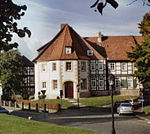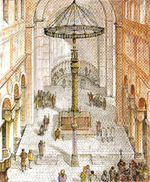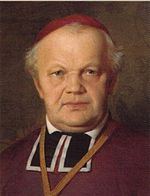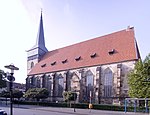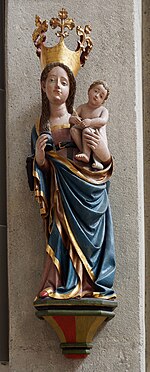St. Godehard, Hildesheim
12th-century churches in GermanyBasilica churches in GermanyChristian monasteries established in the 12th centuryChurches in the Diocese of HildesheimRoman Catholic churches in Hildesheim ... and 1 more
Romanesque architecture in Germany

St. Godehard is a church in Hildesheim, Germany, formerly the church of a Benedictine abbey. It remained almost unaltered through the centuries and was not damaged much in World War II. It is one of the most important examples of Romanesque architecture in Germany. It is a church of the Catholic parish Heilig Kreuz. The basilica has served as the "cathedral" of the bishop of Hildesheim from 1945 to 1960, when the Hildesheim Cathedral was destroyed and rebuilt, and from 2010, when restoration of the cathedral began. The Hezilo chandelier was installed in St. Godehard during the restoration time.
Excerpt from the Wikipedia article St. Godehard, Hildesheim (License: CC BY-SA 3.0, Authors, Images).St. Godehard, Hildesheim
Godehardsplatz, Hildesheim Altstadt (Stadtmitte/Neustadt)
Geographical coordinates (GPS) Address Website External links Nearby Places Show on map
Geographical coordinates (GPS)
| Latitude | Longitude |
|---|---|
| N 52.145277777778 ° | E 9.9502777777778 ° |
Address
Basilika St. Godehard
Godehardsplatz
31134 Hildesheim, Altstadt (Stadtmitte/Neustadt)
Lower Saxony, Germany
Open on Google Maps
